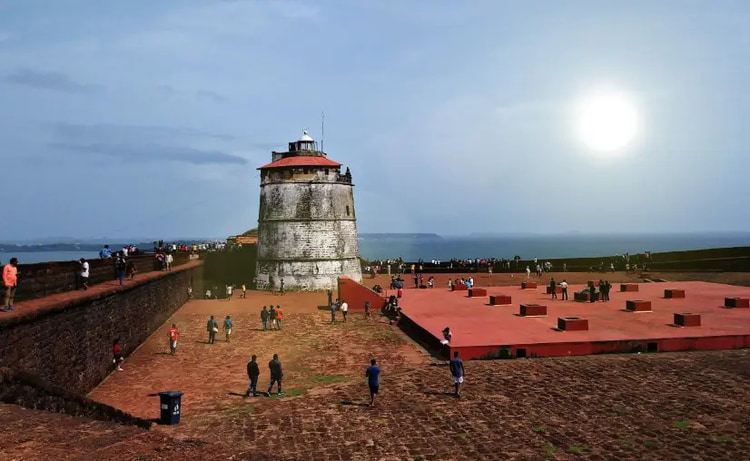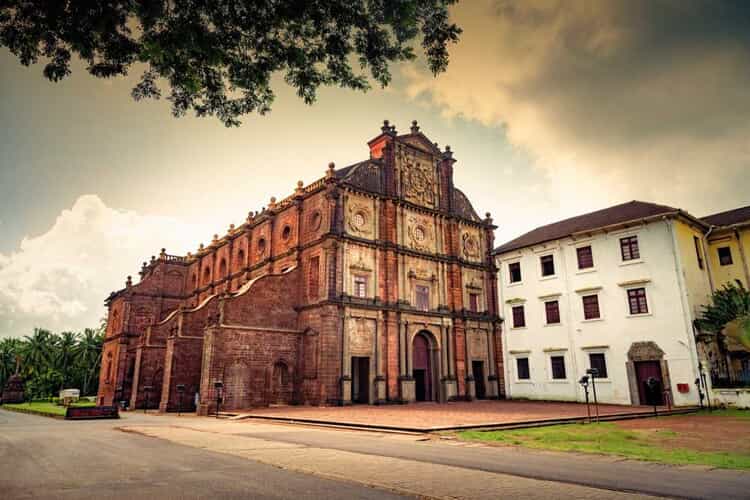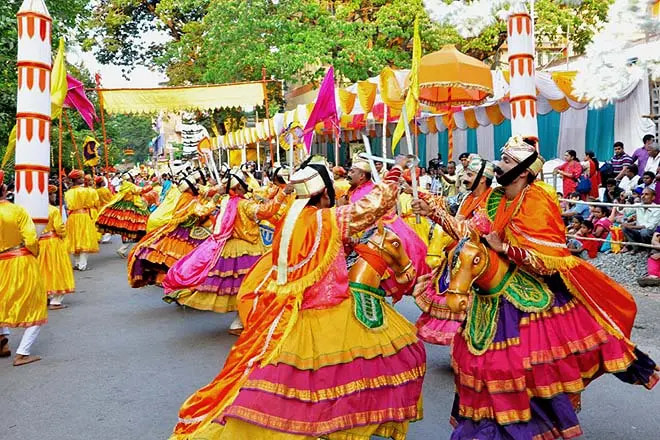If you’re heading to Goa, no doubt it’s because you’ve seen pictures of pristine beaches, magical palm trees and the beautiful turquoise sea. It’s India’s number one beach and family holiday destination and for a good reason, it’s absolutely stunning. But there is so much more to do in Goa beyond beaches.
A direct flight of Uzbekistan Airways from Tashkent to the capital of the state of Goa, Panaji, takes a little more than four hours and immediately upon leaving the airport, tourists find themselves in the real tropics. In addition to relaxing on the magnificent sandy beaches for many kilometers, Goa has something to see for everyone interested in history, folklore, and folk crafts. A little history. For almost four centuries, Goa was a Portuguese colony (the state became part of India only in the 60s of the last century), so here languages, culture, customs and religions are miraculously intertwined.
The famous 350-meter Dudhsagar waterfall, where the water falls from a height of from steep cliffs, forming a small lake - a favorite vacation spot for Indians and tourists from all over the world. Whole families come here, having covered a decent distance in SUVs, to enjoy the pristine nature, see the forests and its indispensable inhabitants - small monkeys that happily approach people for a treat.

A UNESCO world heritage site and one of the oldest churches in Goa, the Basilica of Bom Jesus is famous to those who practice the Catholic faith. It contains the tomb and preserved corpse of Saint Francis Xavier who is the apostle of the Indies. Saint Francis was a missionary who dedicated a lot of cause to Asia. In 1542 he arrived in the capital of Portuguese India; Goa. His mission was to restore the Catholic faith to the Portuguese settlers who were living there. He died en route to China in 1552 from a fever.

If you’re wondering what spices go into your food in India and where they come from, Nandanvan Spice Farm is your ticket. This plantation is the cutest little attraction to visit in Goa and they’re most happy to show you around. The plantation, famous for its medicinal and cosmetic products obtained from the trees and shrubs growing here, is also of great interest to tourists. The area, which is over 200 hectares, is covered with gardens that allow for rich harvests of spices and exotic fruits to be collected three times a year.

But perhaps the most memorable thing during these days was the visit of the Shimgo spring festival. The public Shigmo parades consisting of traditional folk and street dancers and elaborately built floats depicting scenes from regional mythology and religious scenes. Meanwhile, Shigmo festivals also continue in various rural parts of Goa, spanning over a fortnight, with different days earmarked for celebrations in different areas. This festival is celebrated around March each year. It is linked to the Hindu lunar calendar, hence its date according to the Gregorian calendar varies.

- This and other festivals are part of our rapidly developing hospitality sector, - said the Minister of Tourism of the state of Goa, Rohan Kaunte. - It is gratifying that India, famous for its beaches, ancient temples and unique culture, has long attracted the attention of Uzbeks. Goa, being one of the main pearls of the Indian tourism industry, annually receives millions of guests from all over the world. Direct flights from Tashkent to Panaji have significantly simplified the route for tourists from Uzbekistan, who can get to the tropical paradise faster and more comfortably. On the other hand, Uzbekistan, famous for its rich history, architectural monuments and hospitality, is becoming increasingly popular among Indian travelers wishing to get to know Samarkand, Bukhara, Khiva and other historical cities. New airlines open up additional opportunities for entrepreneurs from Uzbekistan and India to actively develop cooperation in various fields, including trade, education, pharmaceuticals, and medicine.
Chorão Island on the Mandovi River is also popular with tourists. Chorão is accessible by the ferry from Ribandar. Chorão village is known for its Luso-Goan churches and houses. It is also known for its bird sanctuary.It is one of six major islands between the Mandovi and Zuari. For the convenience of guests and locals, ferries go here every half hour, and you can cross directly by car. You can also travel along the river delta on motorboats, exploring the famous mangrove forests. On the island, travelers will find plantations of exotic plants, ancient temples and churches, as well as the famous Yoga Institute. Fort Aguada, built in 1612 by the Portuguese, is also a magnificent architectural ensemble. At that time, it was a landmark for ships arriving from the Old World. This old Portuguese fort stands on the banks of the Mandovi River. It was originally intended to protect shipping and nearby areas from attacks. Now there is a museum, souvenir shops and catering outlets. The old part of Goa is also well preserved with Catholic churches and one-story residential houses in the Portuguese style of the 16th-18th centuries.

Goa attracts tourists from all over the world with its natural exoticism, rich history and unique sites; a family vacation here and a lot of pleasant impressions will be remembered for years.















